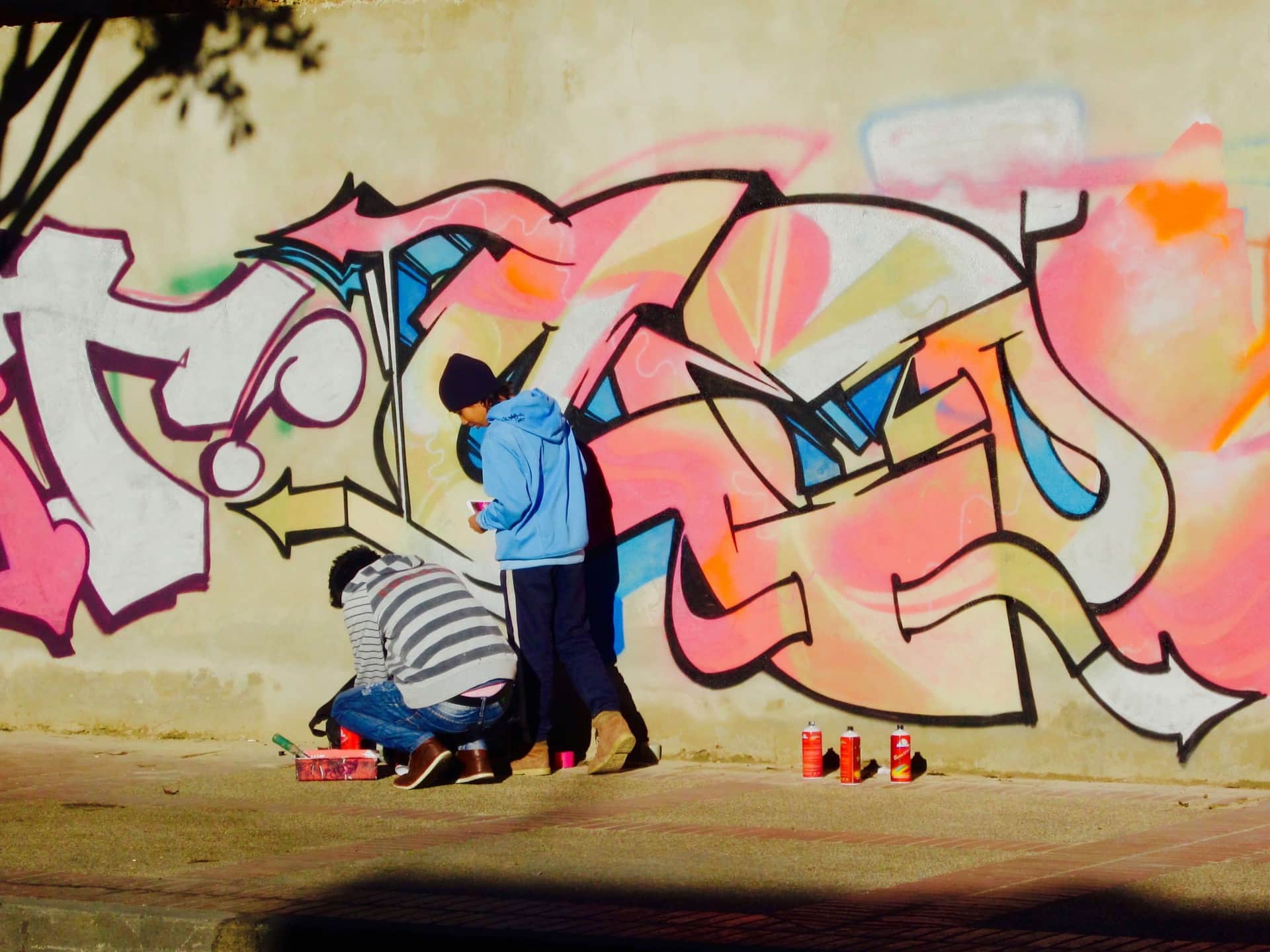Bogota has been on my “to do” list since earlier in the year when I had visited Medellin in Colombia. I had read that Bogota had made a huge turnaround since the early 1990s when it was a chaotic, fear-ridden, decaying city and I wanted to go and see for myself.
My arrival was a little “rough.”
When I checked into the hotel. they said the reservation I had made on the internet had not been received, even though I produced a printed confirmation. It was a scam to push the rate up — but after working that one out, I made up my mind that it would not taint the rest of my visit! I would go forward with an open mind even though I had been told Bogota is notorious for its scams !!
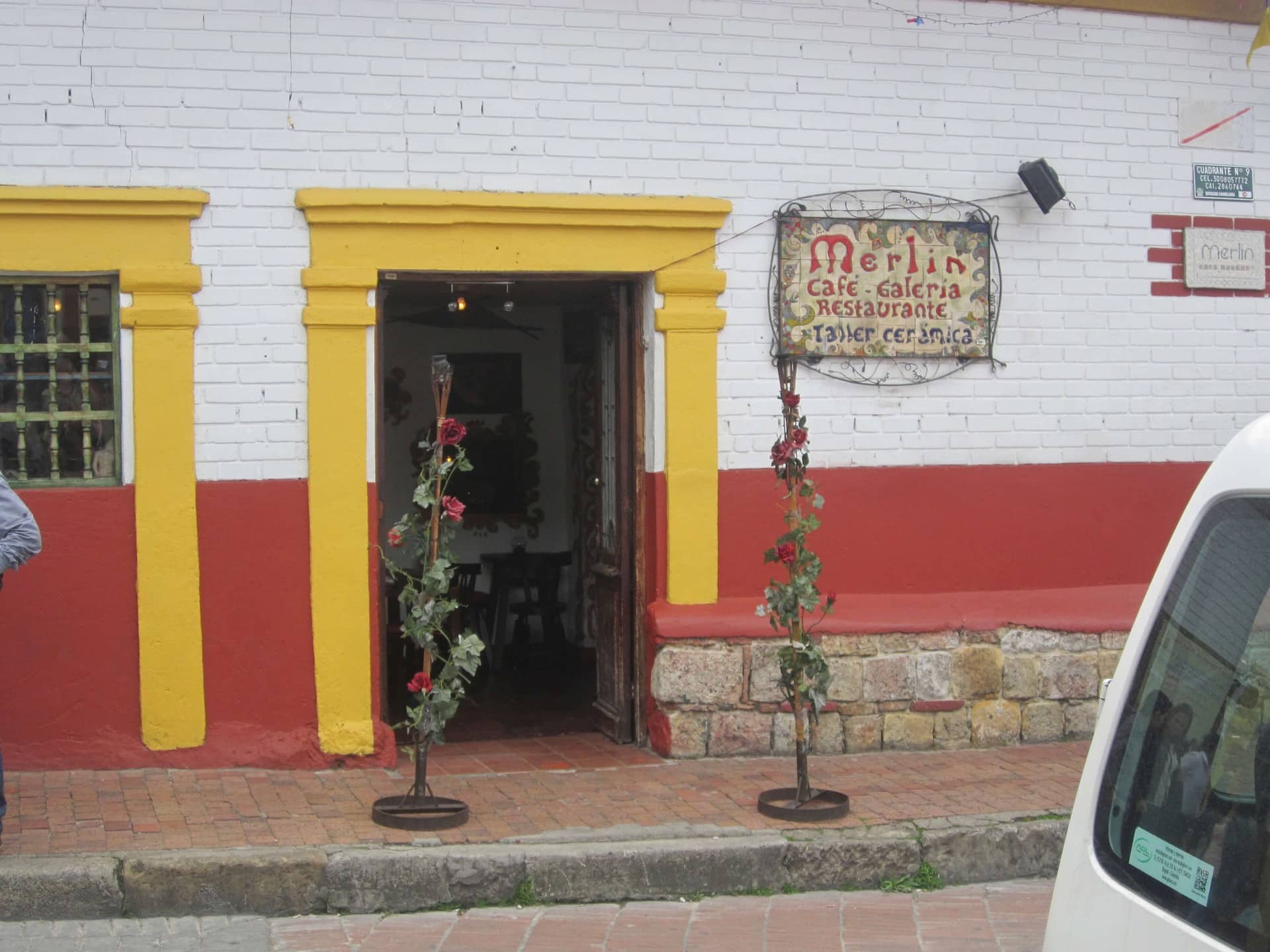
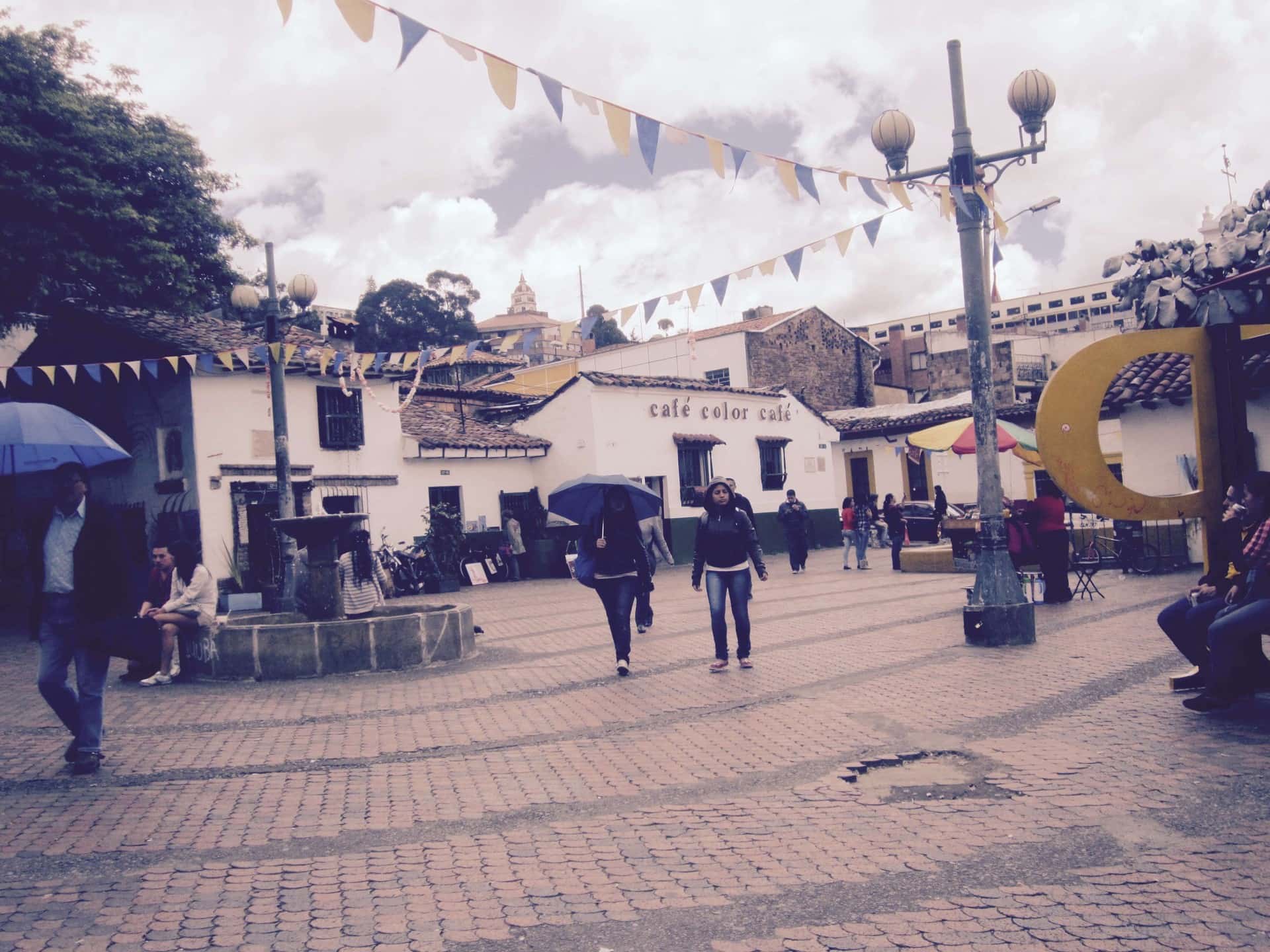

I had no idea of the actual physical size of Bogota and started my tour in the Candelaria, the historic downtown area of Bogota, then headed to Bolivar Square. The taxi ride seemed to go on forever and after the unfortunate hotel experience, I wondered if the driver was going round and round the same block — but eventually we arrived.

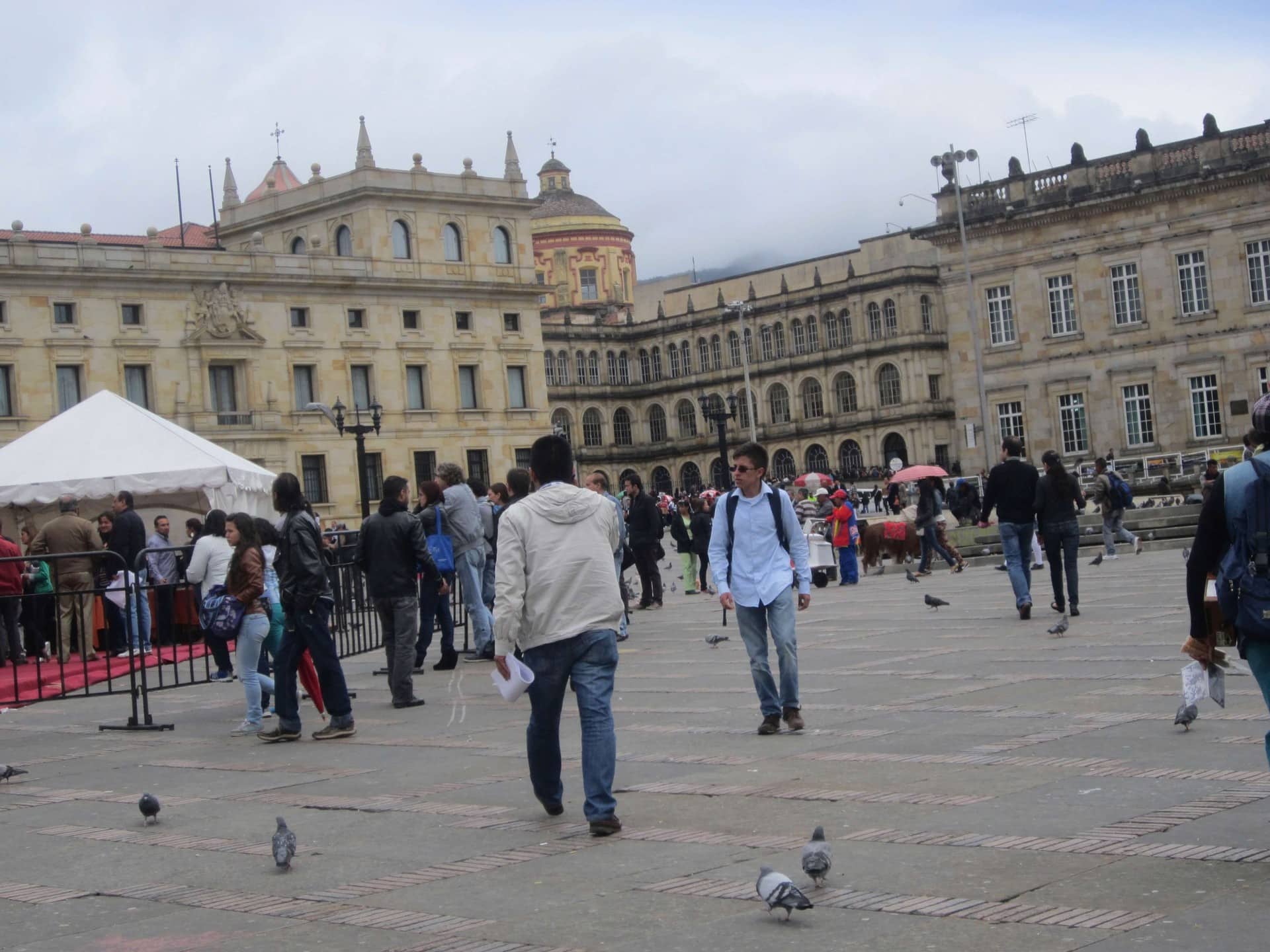
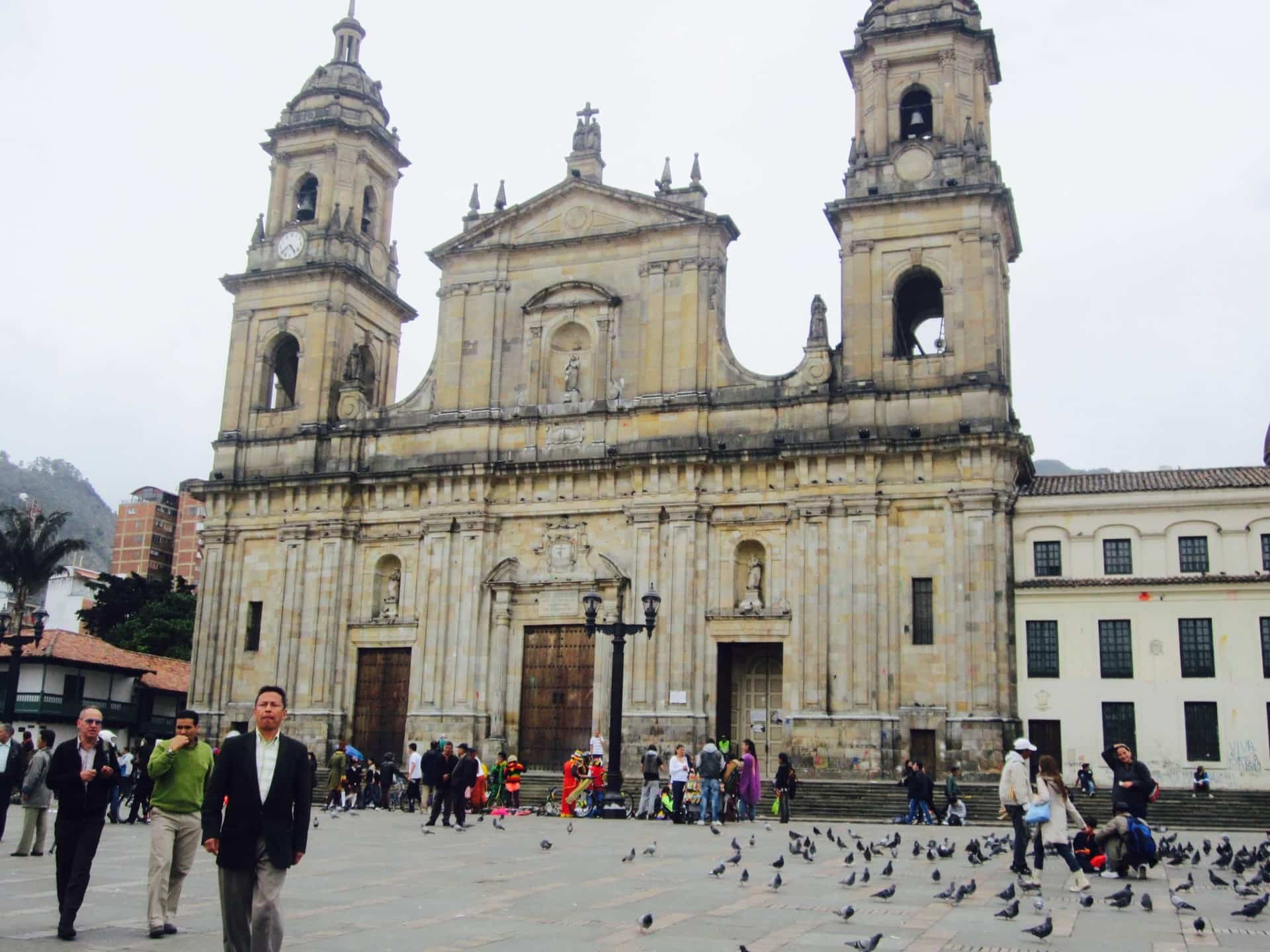

Bolivar Square is a large open space, with a statue of Simon Bolivar mounted on a horse in the center (with a touch of graffiti) surrounded by by impressive buildings designed in the classical style of architecture. This was the downtown historic center of the City. It was a lively scene with jugglers, clowns, strolling musicians, a superb mime, vendors selling fresh fruit and snacks and much activity. Pigeons were everywhere and people were feeding them.

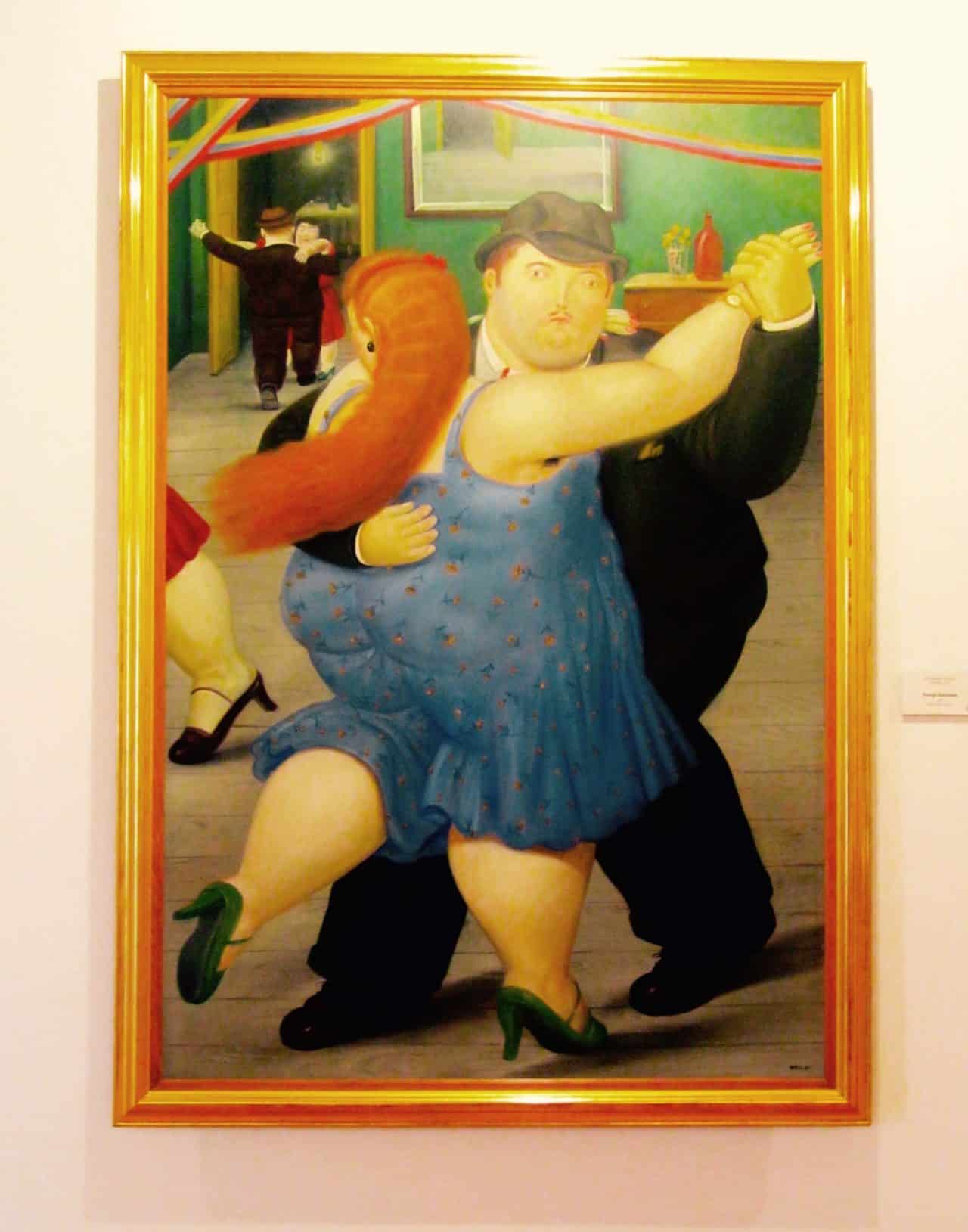
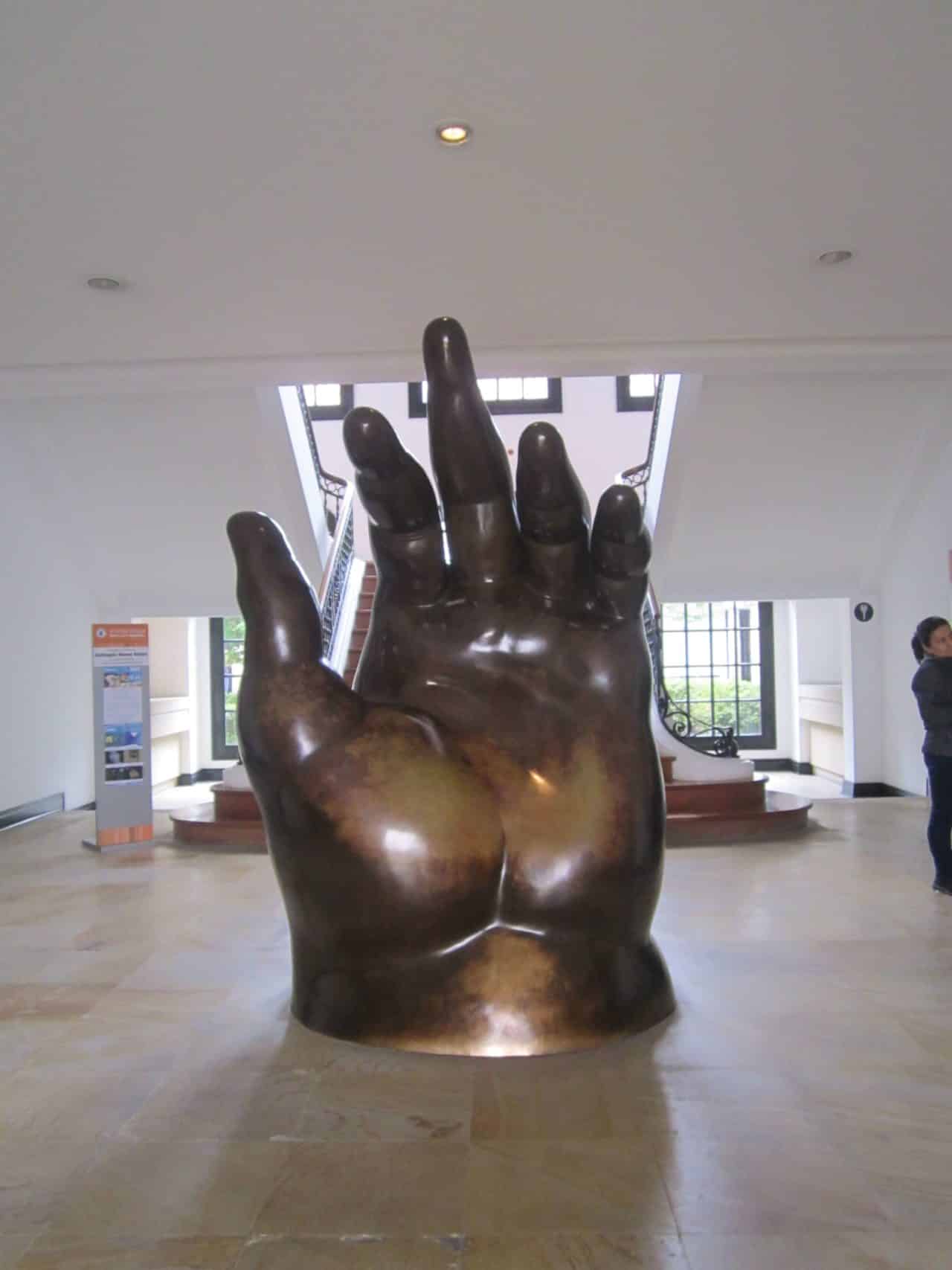
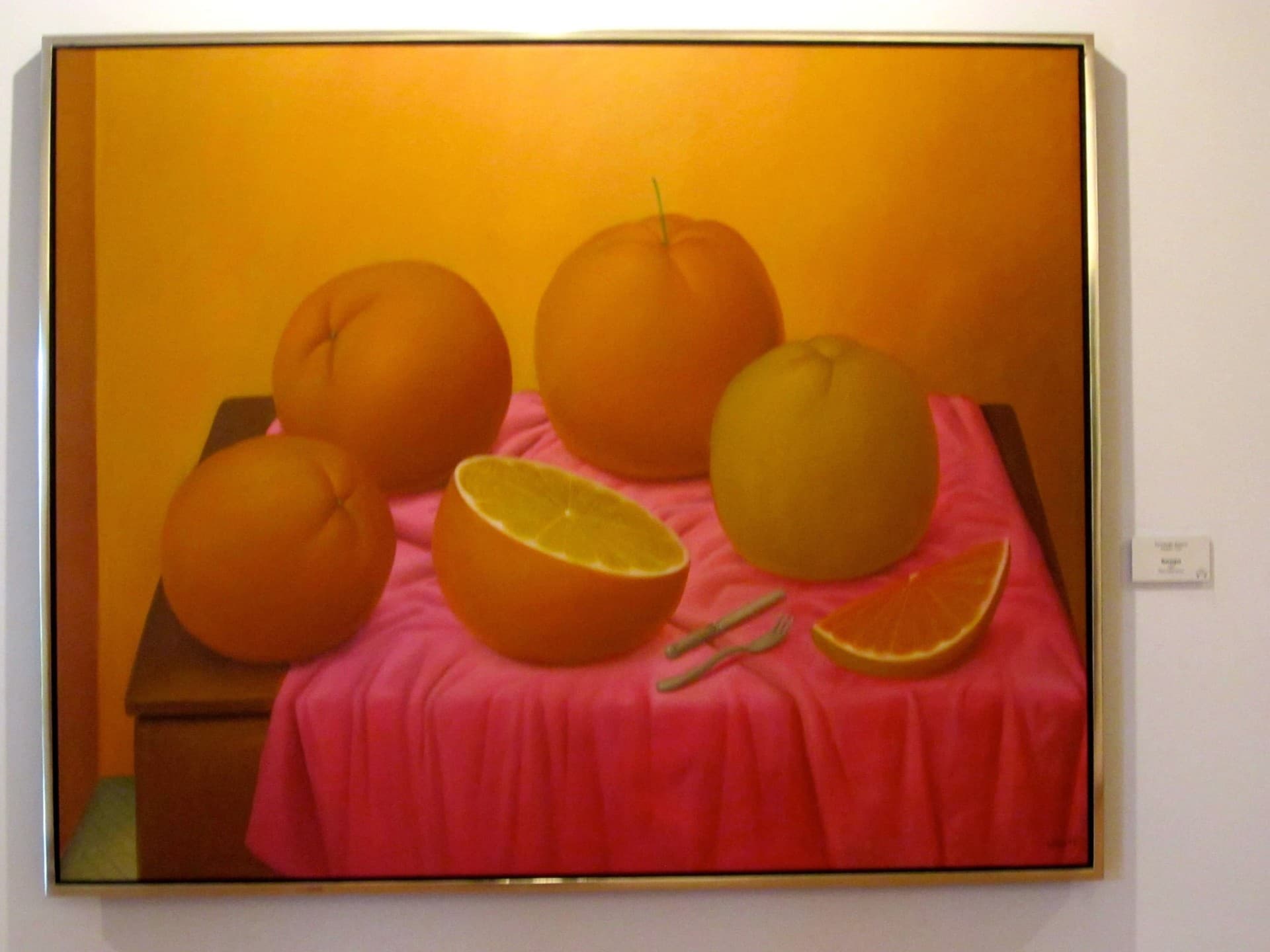
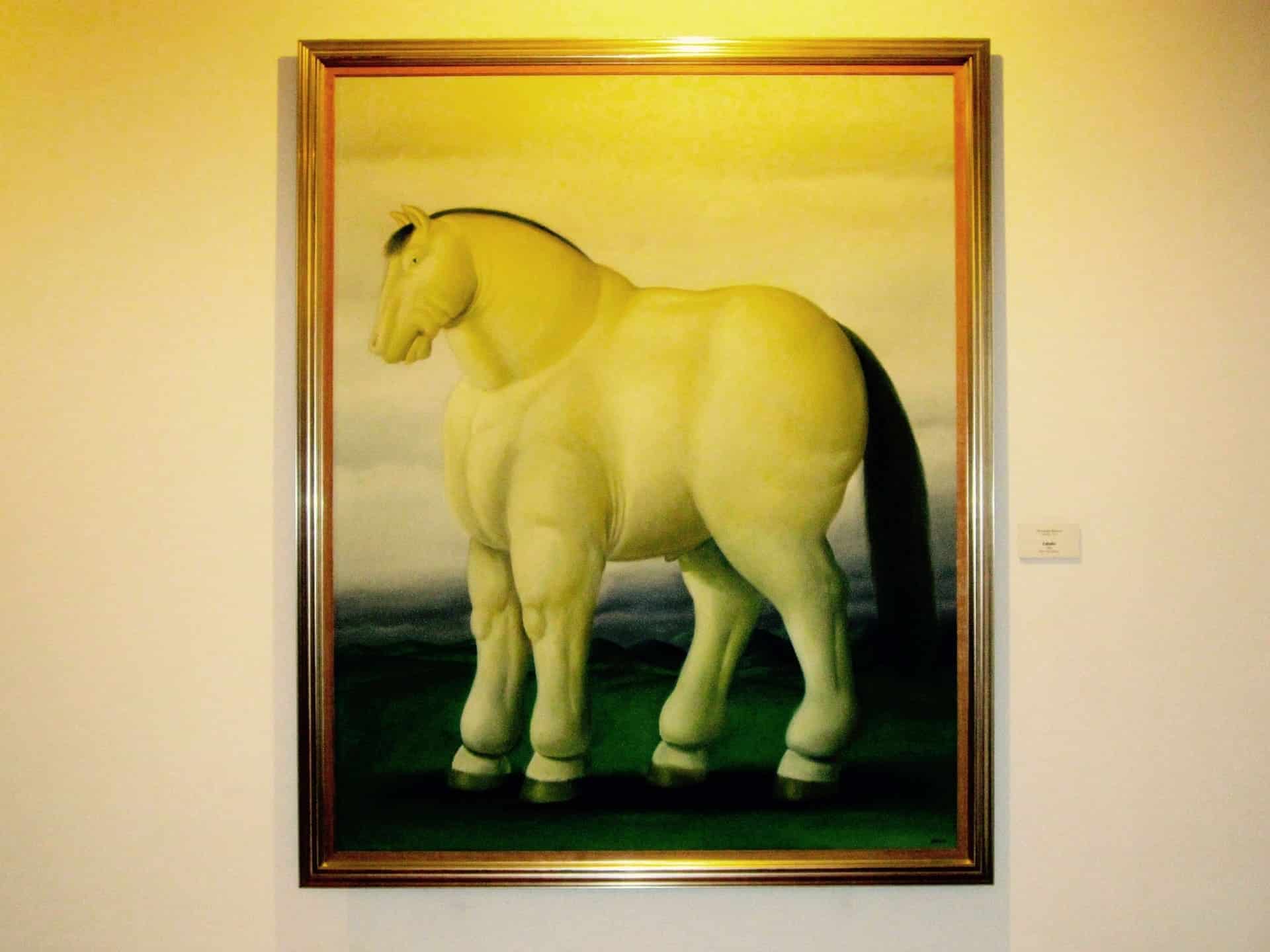
Exploring the area further, I found the Fernando Botero Museum, displaying a collection of the artist’s signature sculptures and paintings. Botero is the most recognized living Colombian (and South American) artist, sought after by Museums and private collectors worldwide. His work is often humorous and easily recognized because of its large and exaggerated volumes and shapes. All told, he has donated two hundred and eight paintings to the Botero Museum including one hundred and twenty three of his own works. Imagine what that would be worth on the International Art Market today !!
I also discovered a fascinating numismatic exhibit detailing early Columbian coining and how it was made “manually” — with immense machines that impressed precious metal with dozens of designs over the years.
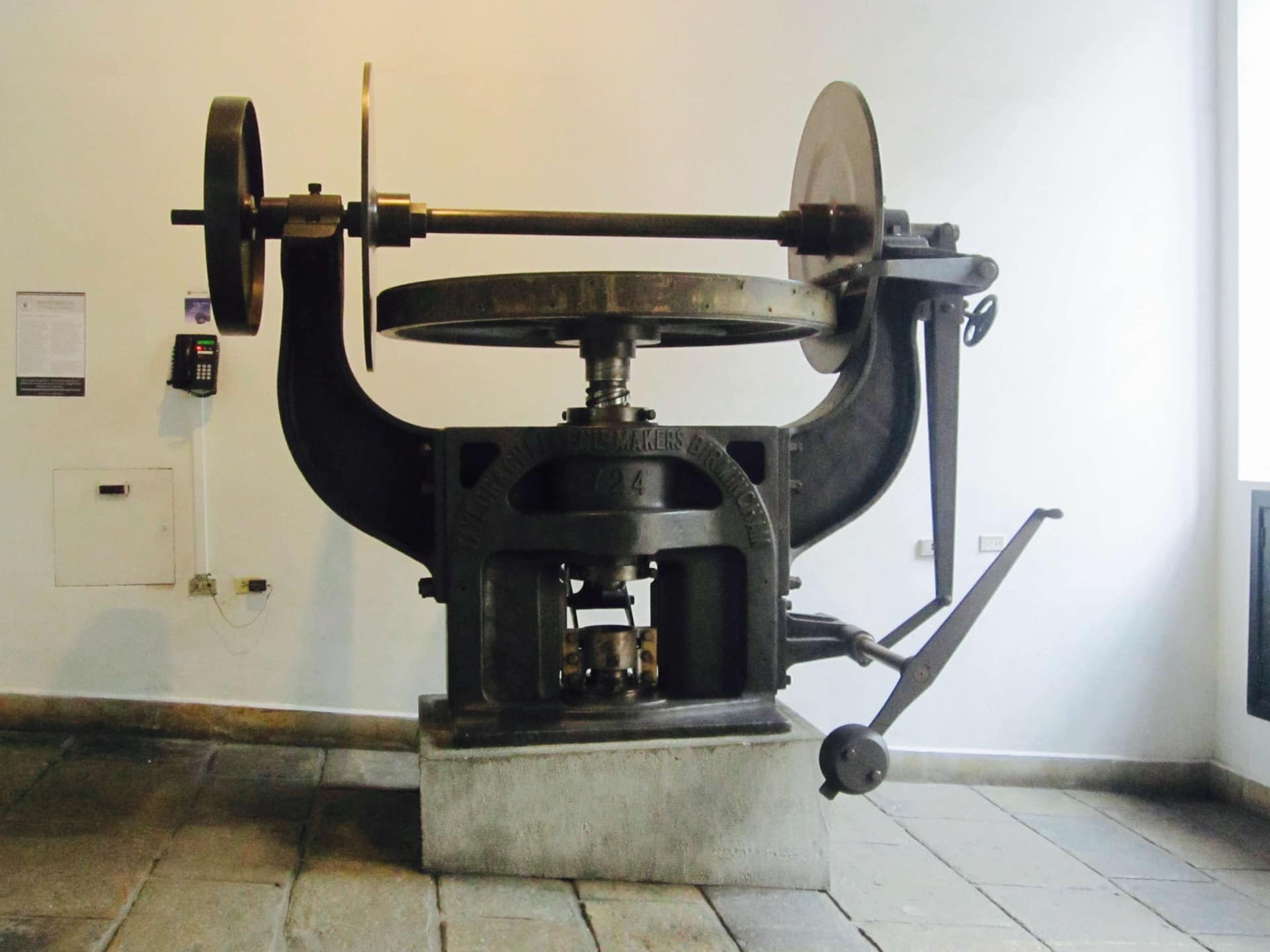

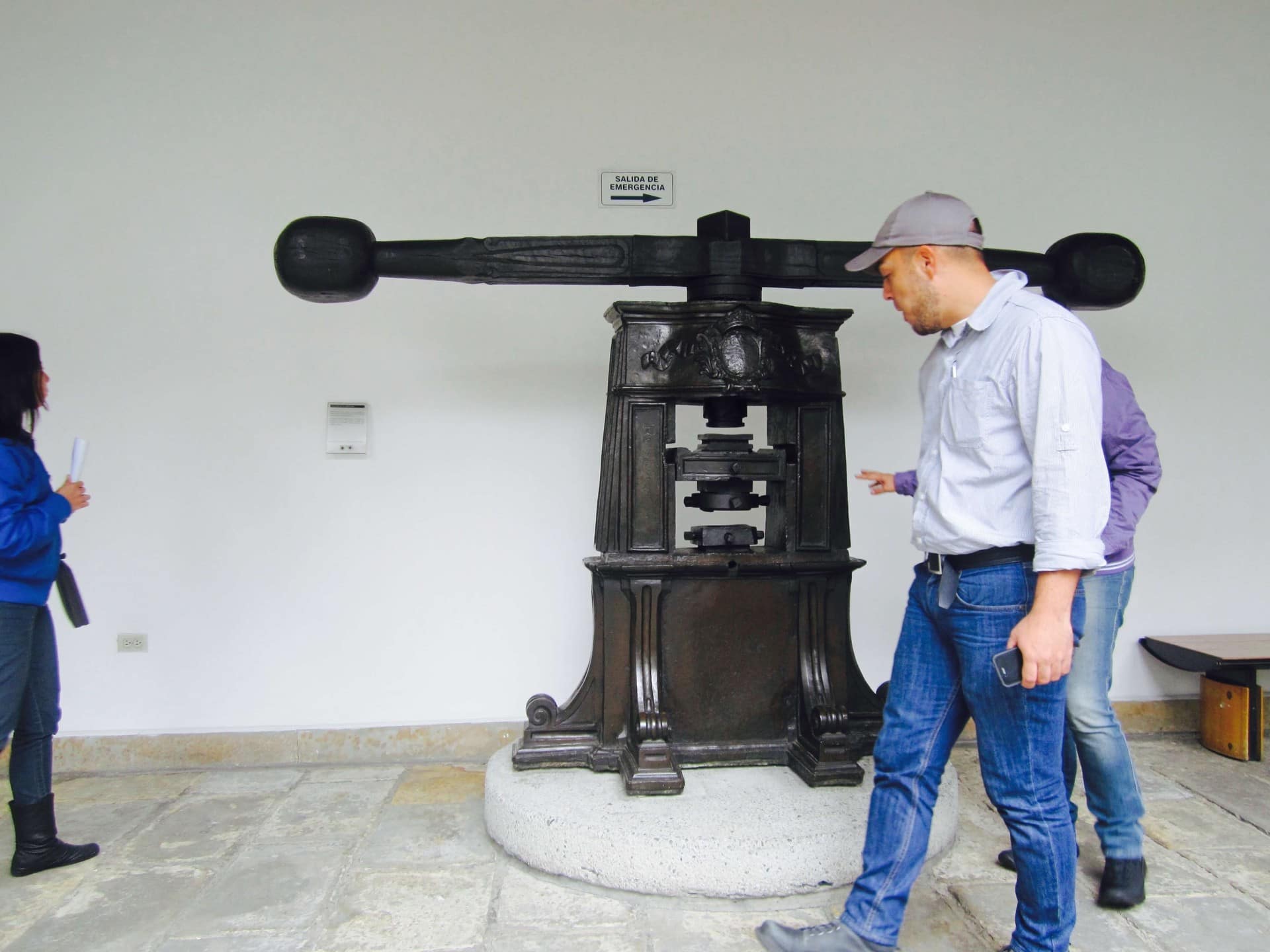
Alongside were restaurants, little shops, street peddlers and ultimately a welcome Juan Valdez coffee shop where I sat and relaxed over a good cappuccino. The brand Juan Valdez is a Colombian Coffee Company that has had an enormous success with its coffee farms, proliferating Juan Valdez coffee shops through out Colombia and Panama – the coffee is good, really good, and their success is deserved.
After my first day of touring on my own, I realized this is a vast and sprawling city — and if I was to begin to understand it, and get through my checklist, I should hire a guide. From the internet, I selected Destino Tours, and based on what I had read and wanted to see, I gave them my “wish list”. I was told to be ready the next morning by 9.30 a.m. when my guide would arrive. We would not be touring in a car, and would use public transport, which I thought was a bit unusual, but went with the flow.
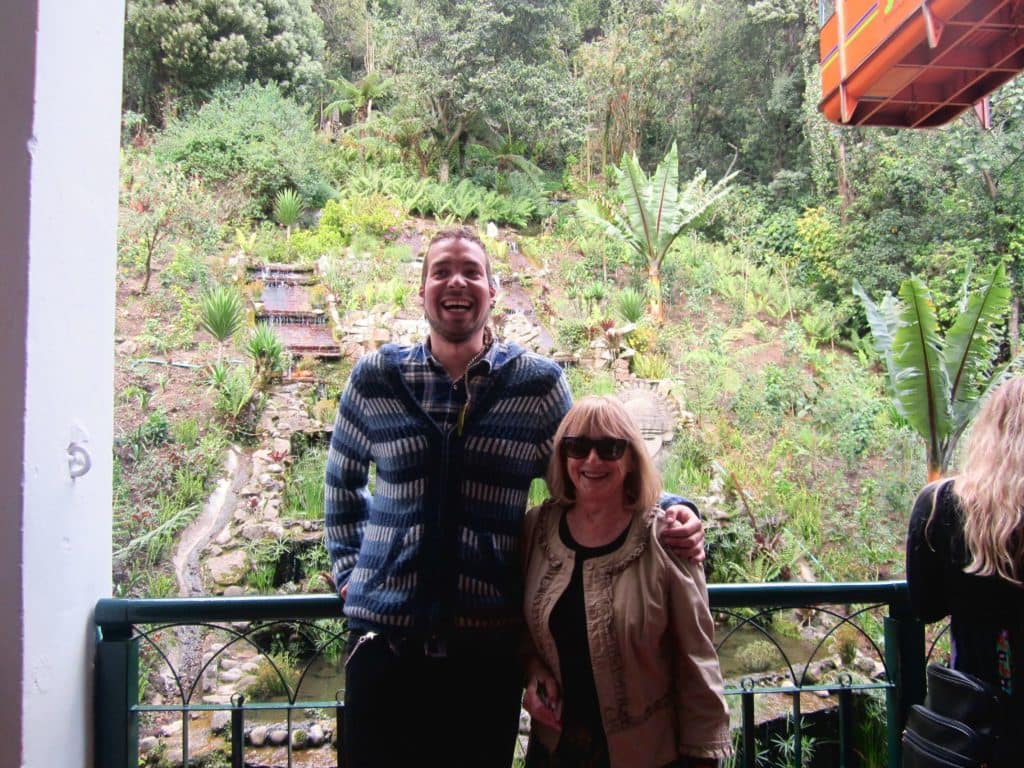
Meeting my guide was a shock and I wondered if I had made a good decision. His name was Andreas and he was six-feet five inches tall, had a mohawk haircut, a few studs in his face, was wild and woolly looking and not what I was expecting.
We went over the plan, headed for the bus and I began to get some insight into Bogota, its history, architecture, politics, personalities, scandals and upheavals. Andreas is a free spirit, who has travelled extensively in South America and spoke openly about his country, He had learned his English at school. but had “polished” it by being with English speaking people he met while backpacking throughout South America. It took a while to understand what he was saying because of his accent: government was “goovermint”, skyscrapers were “skycrappers” (get a visual of that!!) and the word public was a “pooblic” that sounded more like pubic … somewhat disconcerting. But he was a fountain of interesting information and opinions and I got some real insight. He knew his country inside and out and his favorite place was the Pacific coast, its culture, (pronounced “cooltoor”) cooking and music.
We clamored onto the bus and it lurched forward on our way to what Andreas called the Cradle of Bogota, which was the original square from which this sprawling city of ten million inhabitants was born. He explained that the city was never planned and just grew, spawning different neighborhoods that eventually were joined together in a loose grid system with no urban planning.
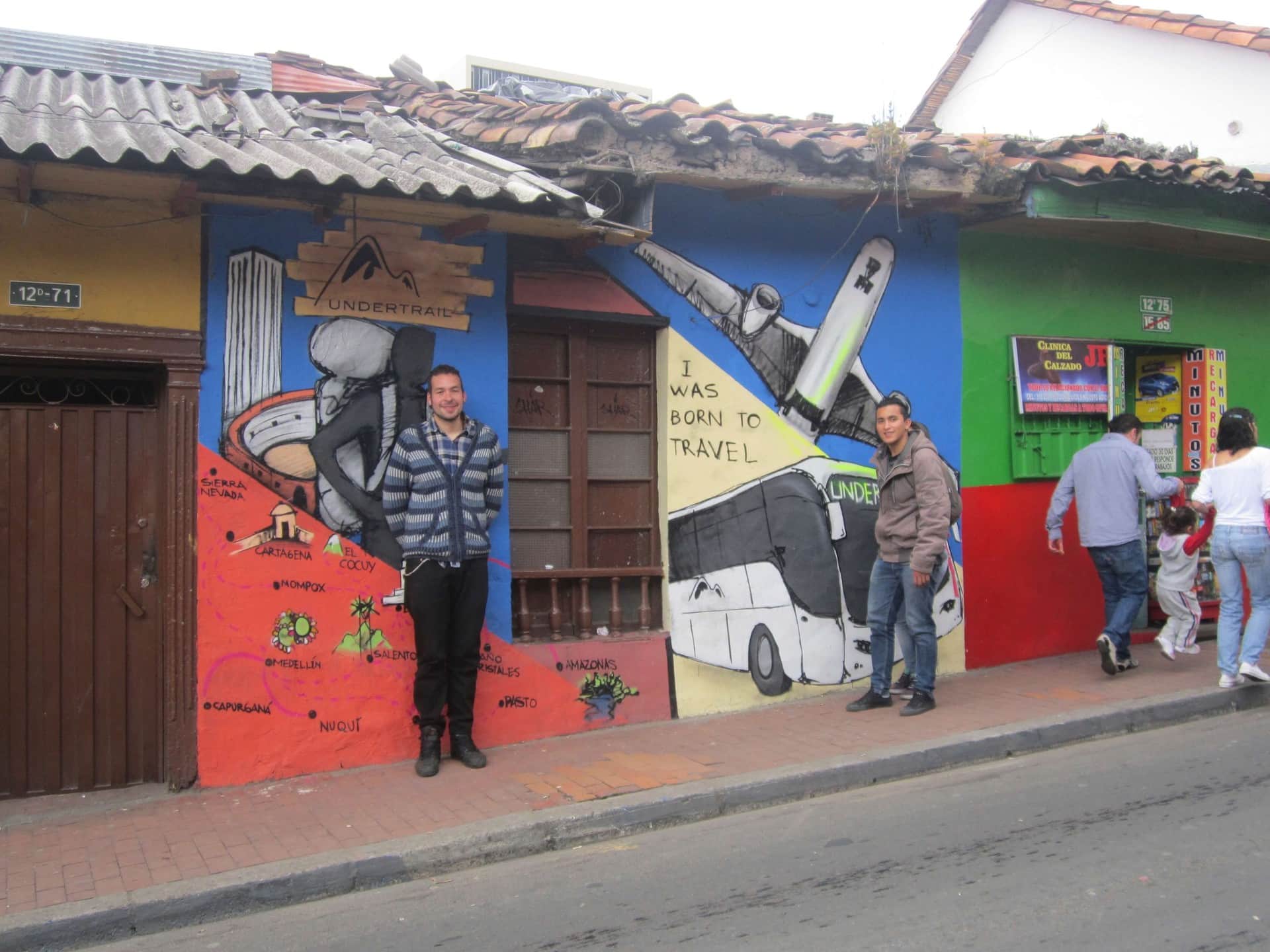

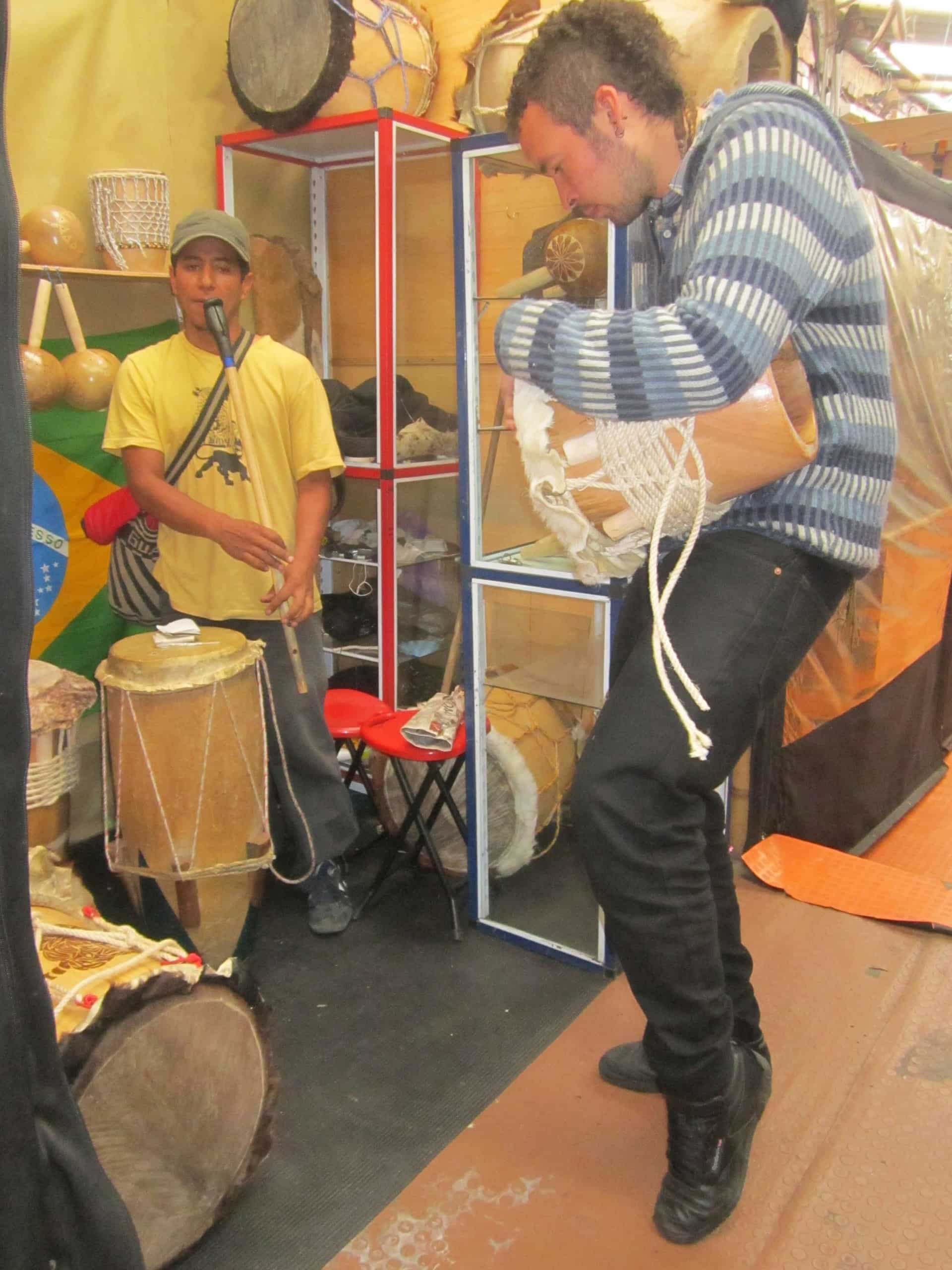
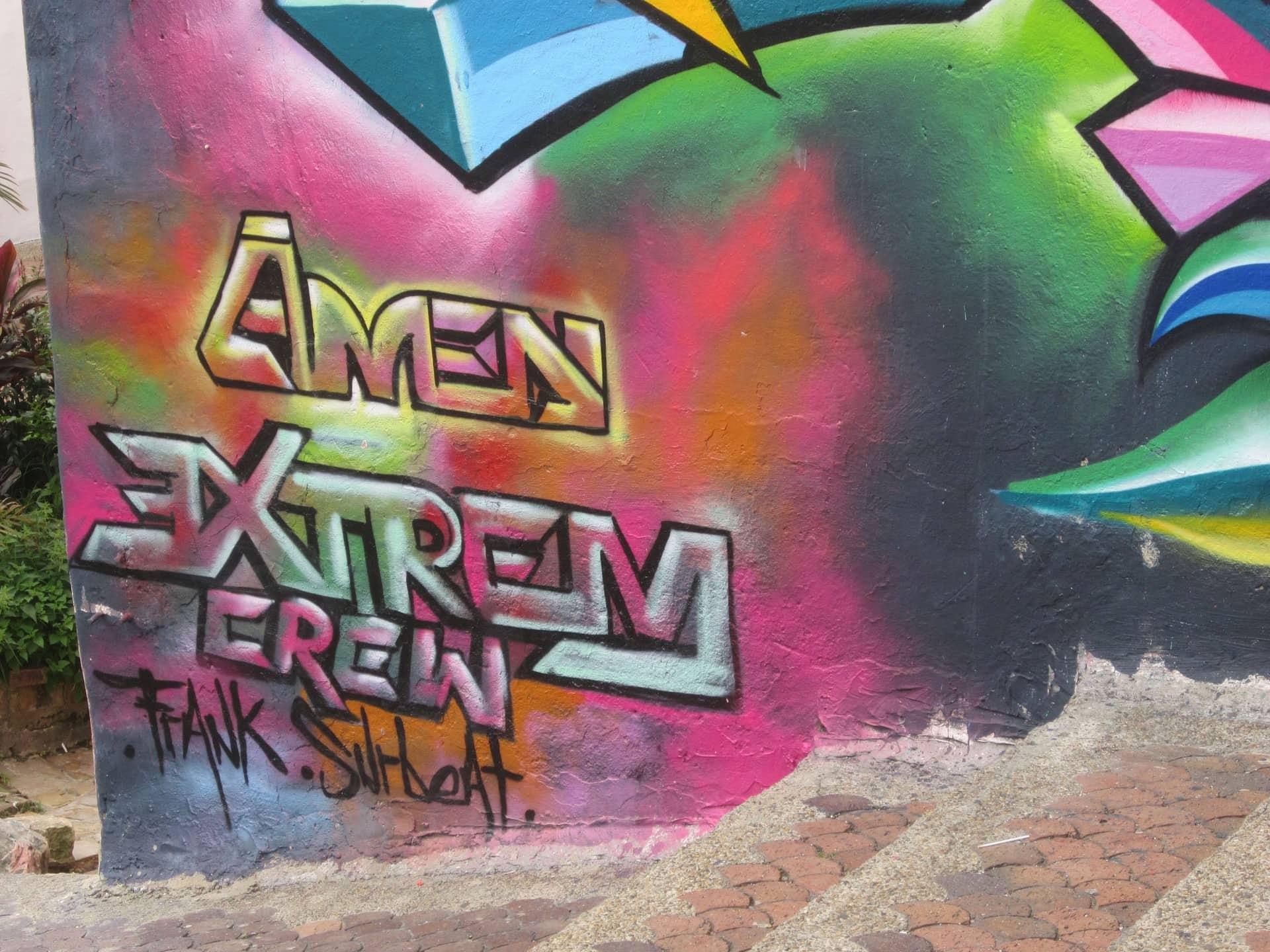
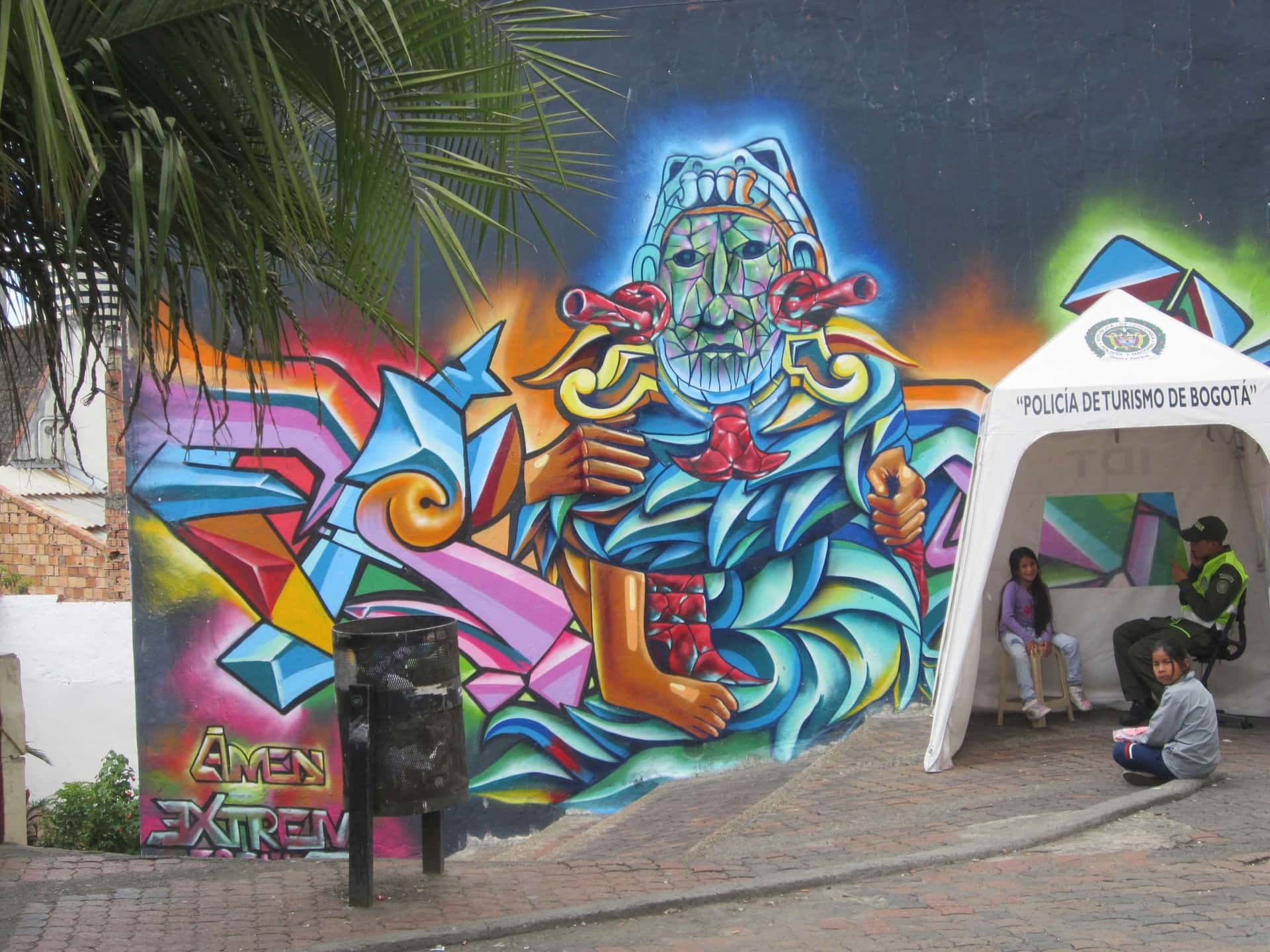
We admired the graffiti and I was told it is an accepted art form in this city. Many graffiti artists are Rastafarian (not sure why) and many are ex-cons, now recognized for their artistic creations and sough- after to do new projects. Most of the graffiti has a political edge and a message.
We wandered through the”Cradle” of Bogota, stopping to see some Pacific Coast musical instruments and Andreas gave a demonstration of how to play the drums. Having worked up an appetite, we sampled street food which I did not enjoy but ate as part of the culture.
I learned that the San Francisco River that runs throughout the city had previously been quite polluted and Salmona, the most recognized of Colombian architects and a brilliant engineer, was responsible for having the river “cleaned”, and harnessing its water supply. Andreas showed me where the architect’s plan took this river underground, purifying the water that is now used as the water supply for the city. A clear example of sustainability.
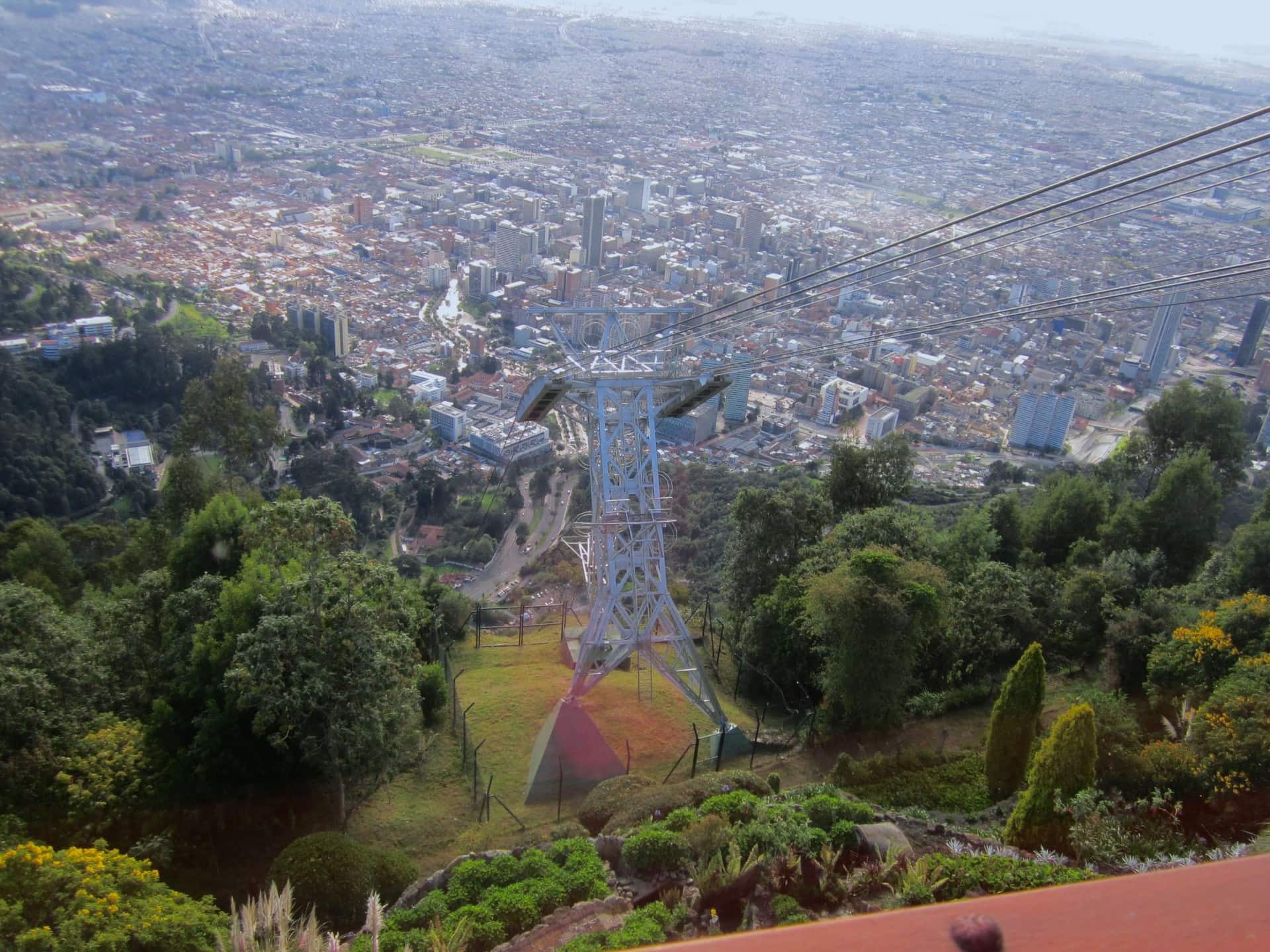
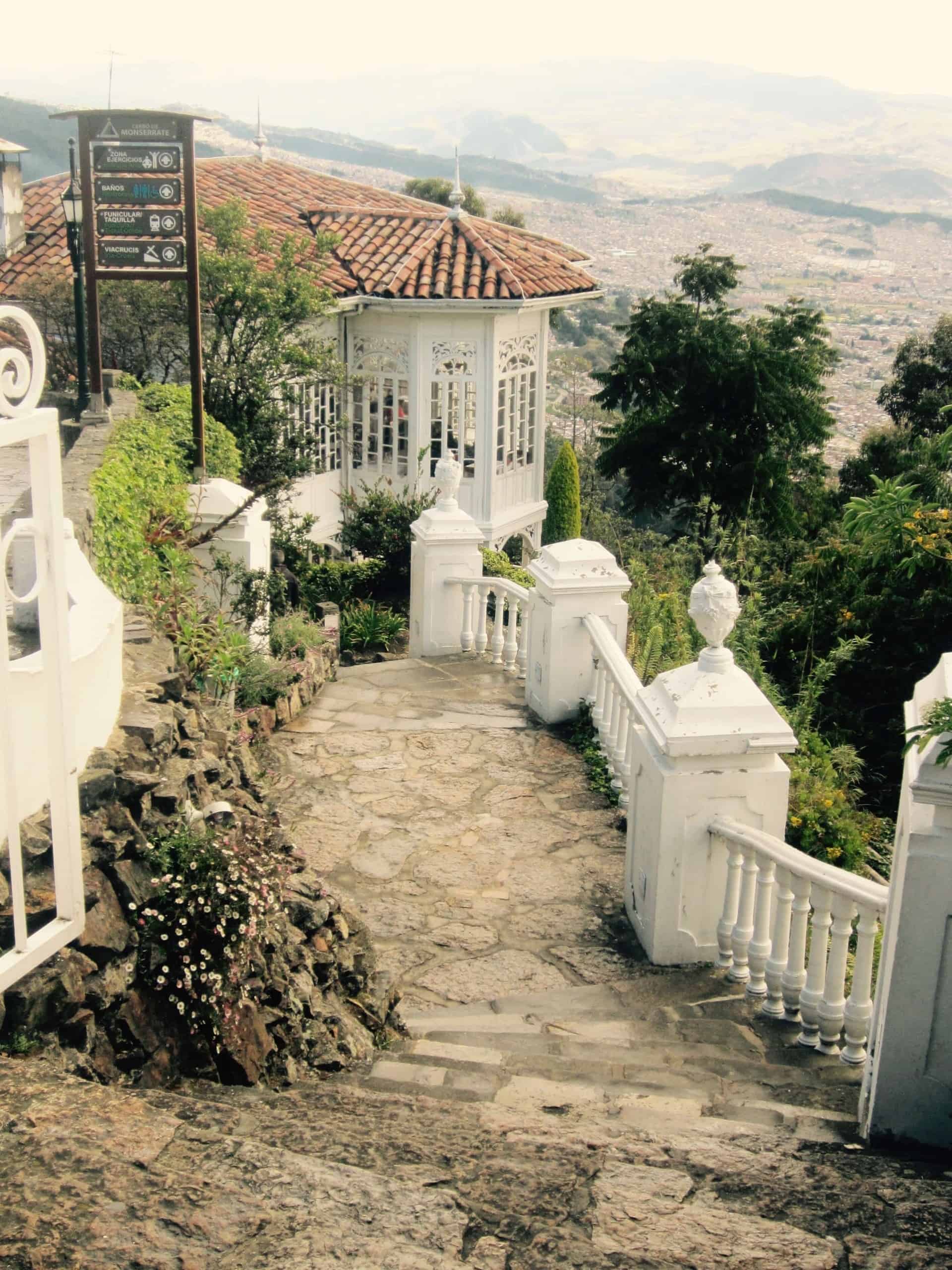

We then went up Mount Monserratte in a “gondola” (a cable car of sorts) to get an overview of the city, then came down to walk the Macarena, a revitalized and bustling neighborhood that is a sort of Soho, with restaurants, avant guarde art galleries and interesting graffiti.
Over the next two days, we walked and talked and took taxis when I was too tired to walk to the bus. Bogota is a high-altitude city, 8,700 feet above sea level, with an annual temperature of sixty degrees, so I was a little chilly in addition to finding it took more effort to walk because of the altitude.
We visited a “leftist” university where I saw un-American graffiti sprawled on the walls, like “American m.f’s go home.” Kids will be kids?
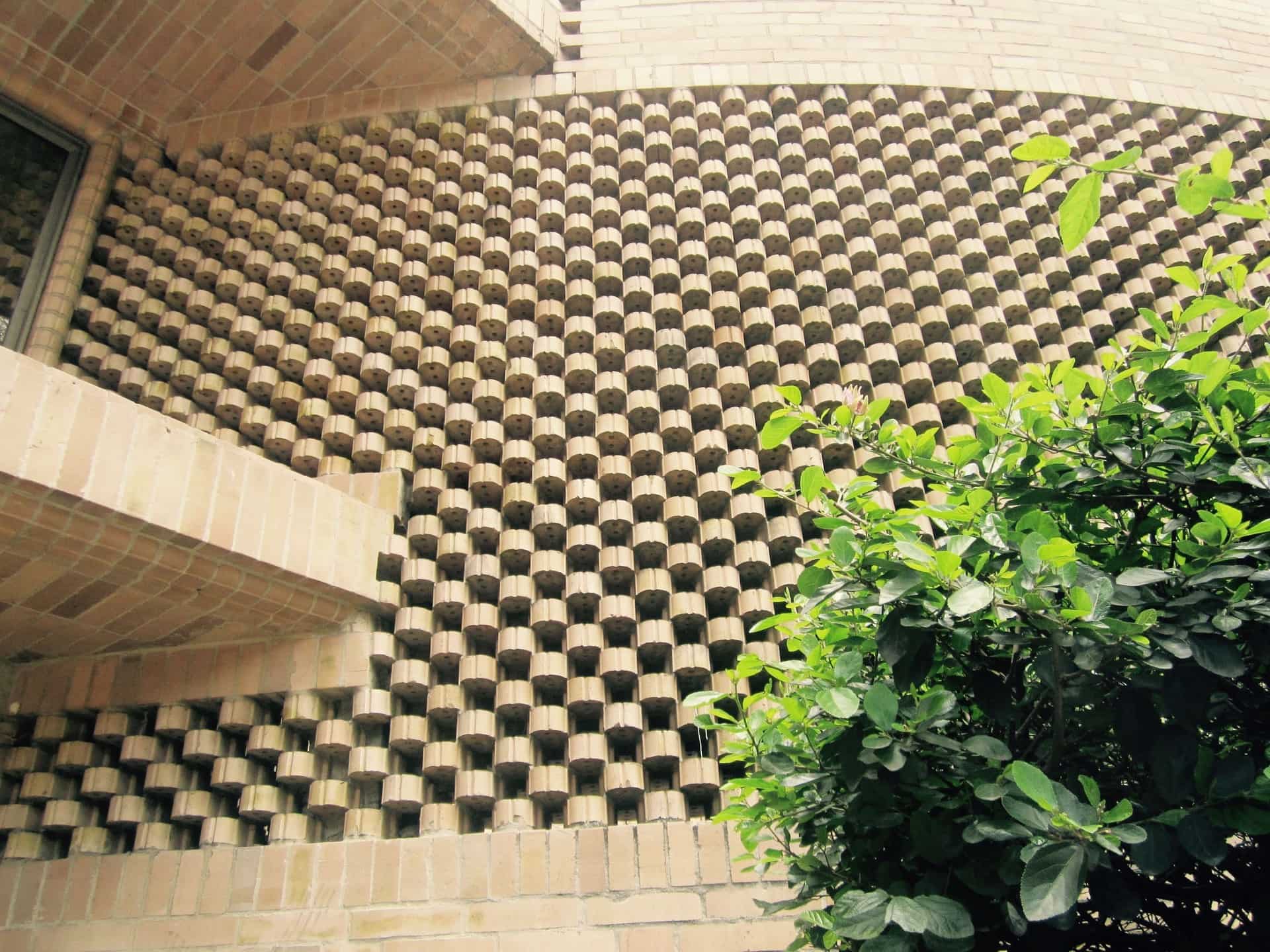
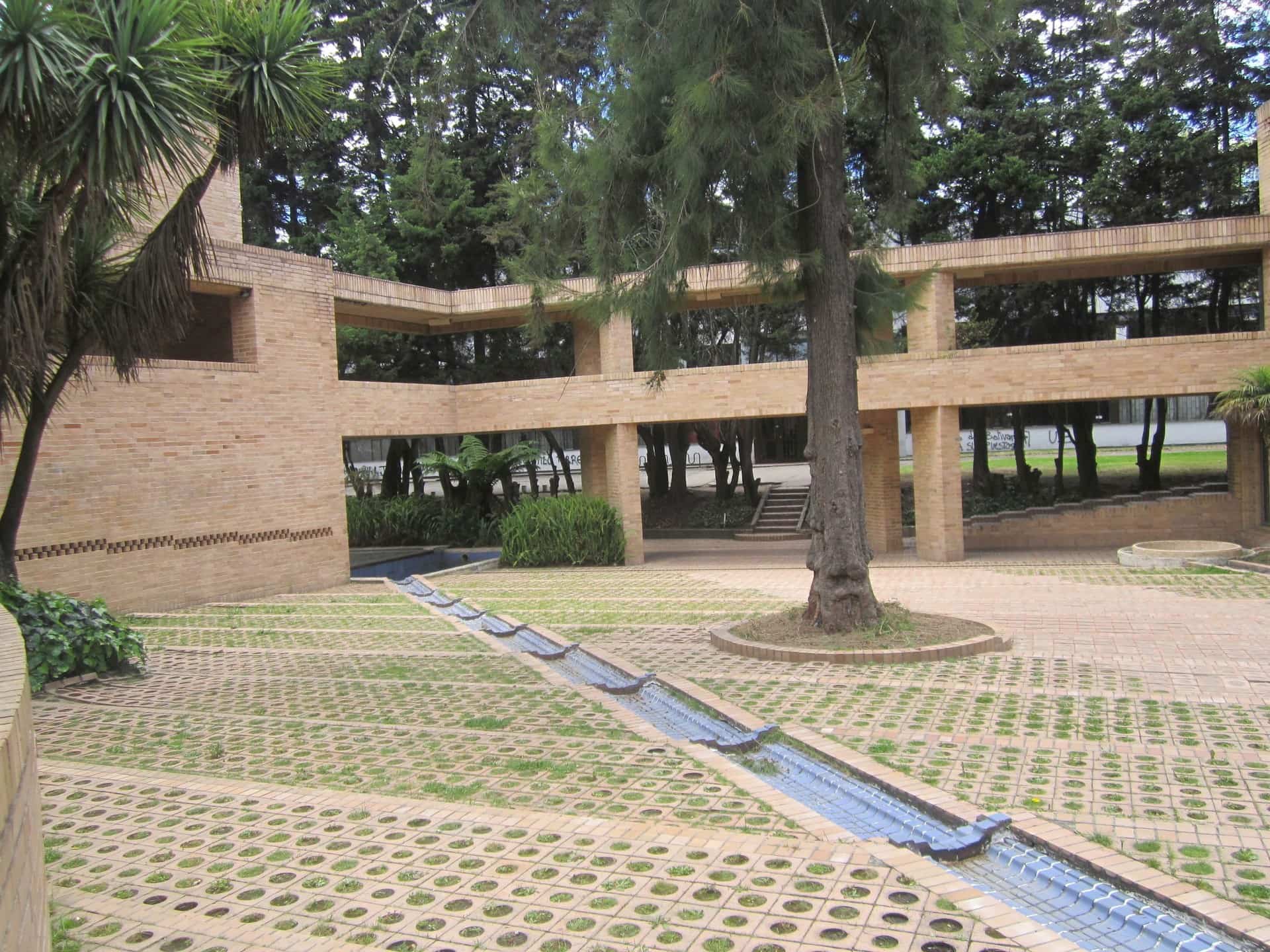
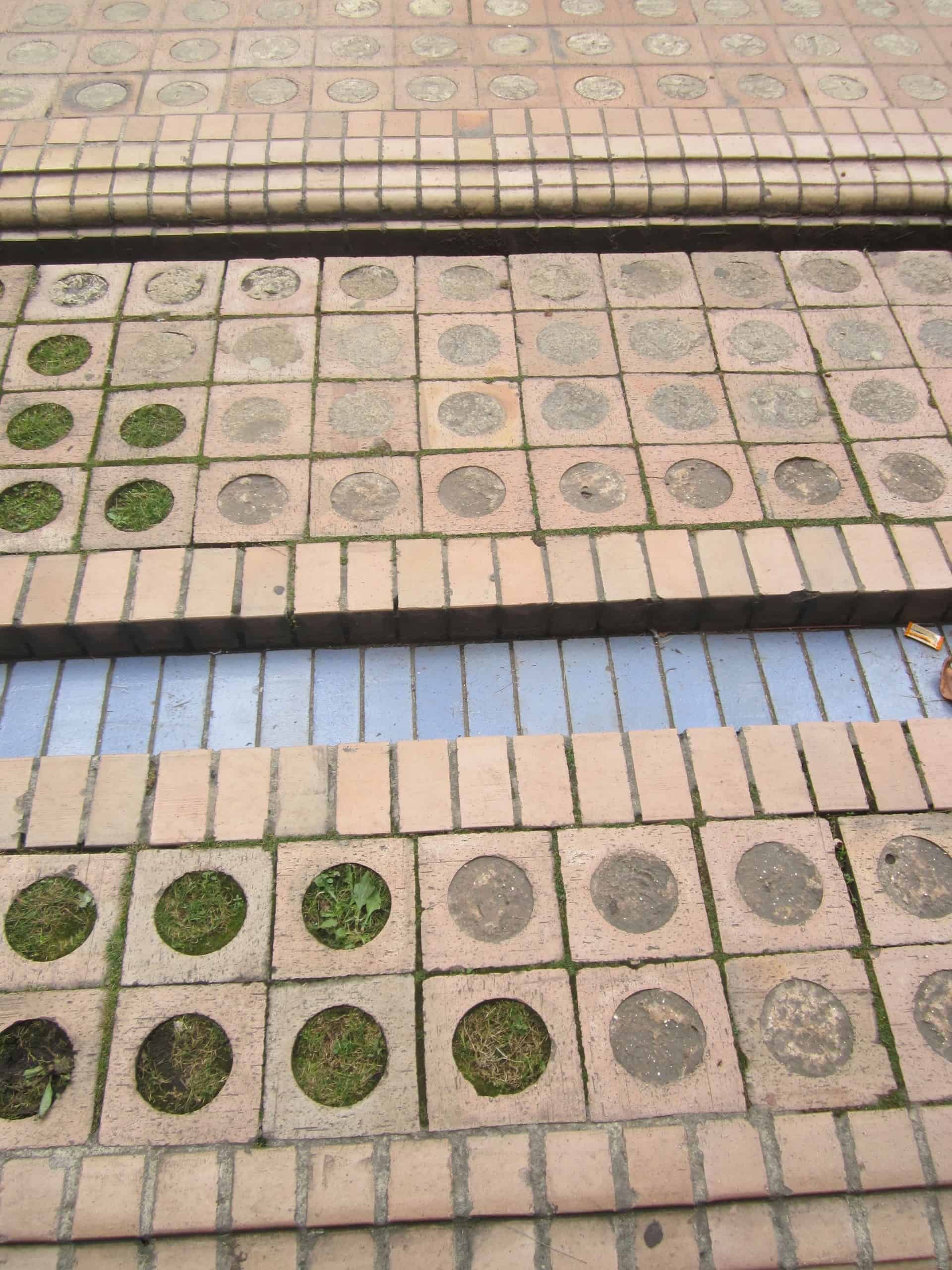

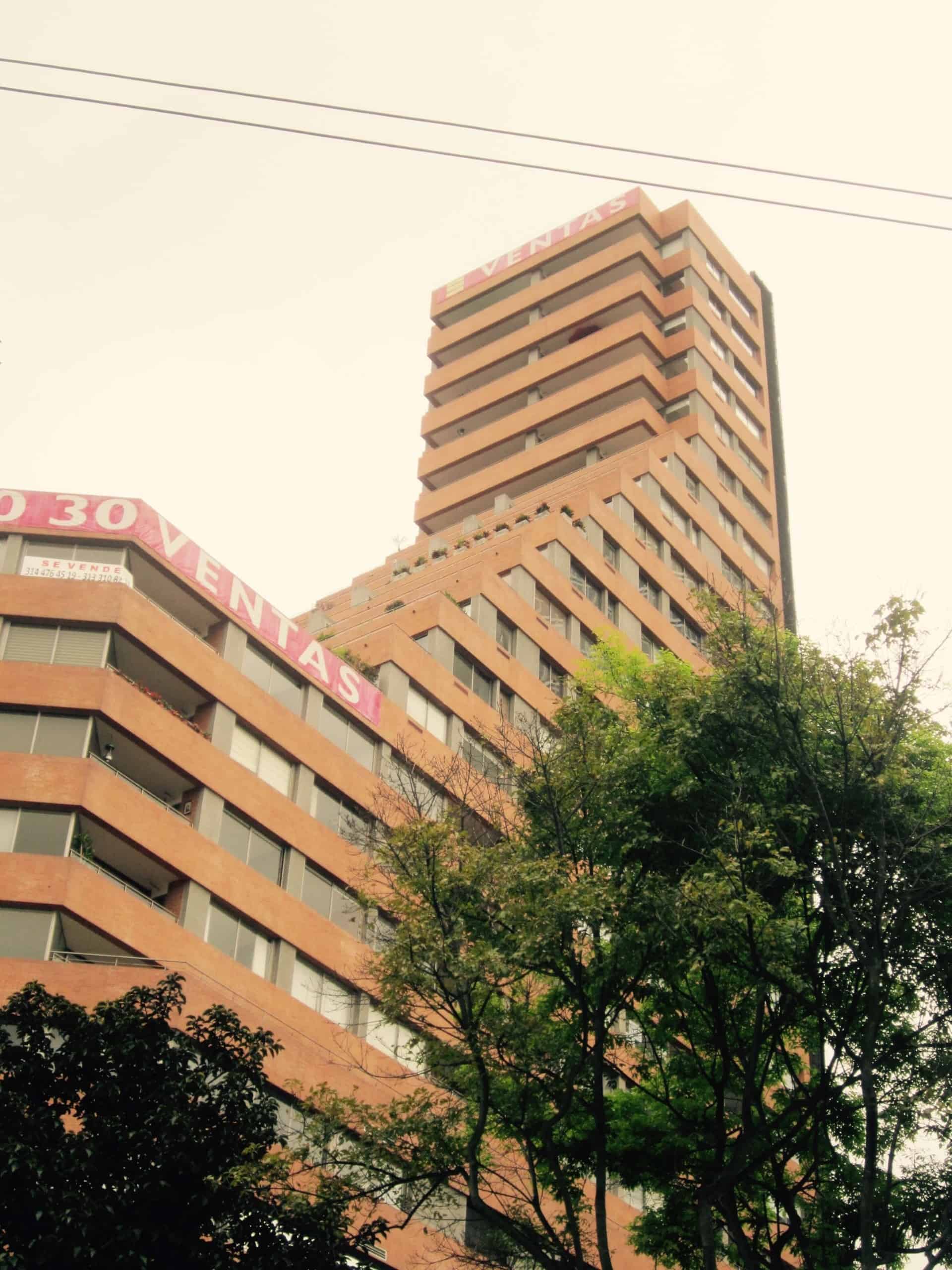

I got up close to some of Salmona’s architecture, too. He had spent several years working with Le Corbusier in Paris as well as observing the intricate brickwork in Granda, Spain, and these elements are apparent in his work.
The Produce Market required a particularly early morning and was a wonderful experience. The fresh fruit and vegetables were a sight to be seen, and were fresh, probably harvested that day or the day before. They had more varieties of potato that I had seen at Gelsons in Los Angeles and the display was amazing! Photographs were forbidden however, and I did not dare break the rule. The fish display took the prize for interesting and creative display and we finished the visit with breakfast on tall wooden stools at a counter.
I had read about the Ricoletta, the city’s famed cemetery, so we went off to see it. These Latin countries have some incredibly interesting cemeteries with beautiful family tombs and gravestones and are the final resting place for celebrities, well-known citizens, murderers and the murdered.
On entering the cemetery there were three large prominent graves, all belonging to murdered heroes, or protesters. These were people with promising futures who were gunned down because they were gaining in popularity, were a threat to the party in power and whose murders were “ordered” by the Government. Murder is part of the culture here and I found it tragic that many brilliant minds had been silenced by death because they had the courage to stand up for their principals — men in their forties and fifties who were trying to make a difference.
Andreas kept me sampling different street foods that he said was part of my graduation process !! There were arepas and tortilla-like pies, wafers sold from bicycle carts with a sweet filling mixed with cheese and topped with a strawberry sauce that was actually quite good. The one I really enjoyed was the wafer covered with a warmed chocolate sauce.

One dinner, we visited a restaurant serving Pacific coast fish. Simple plastic chairs, no table cloths, fresh homemade fruit juice served out of plastic jugs and no-frills or refinement.
The first course was a fish soup that as enough for a meal — but this was followed by fried fish, french fries, plantains, rice and salad. The quantities were enormous and the fish was delectable, with a crunchy exterior. This was a hole in the wall restaurant that I would never have found on my own or been tempted to try!
Bicycles are everywhere in Bogota, cycling has been encouraged as a way to reduce the amount of cars on the roads. There is an extensive network of cycle paths. On Sunday, many roads are closed to motor traffic from early morning until 4.00 p.m. to allow cyclists the freedom of the roads. I was in Bogota on a Sunday and saw this in effect. It is also a way to promote fitness.
Traffic has also been reduced by introducing restrictions on the days that a person is allowed to drive. This is hard to believe when one sees the volume of traffic on the roads, but it did make a difference and there are penalties if caught not following the rules. The bus system is good and affordable, and operates like an above ground metro with numerous connections. Taxis are also plentiful and inexpensive, about $3.00 to $4.00 a ride and no tipping.
Citizens in Bogota are always protesting and although many protests are unsuccessful the one brought on by the taxi drivers recently to reduce the price of gas was extremely effective and caused the whole city to come to a standstill. The government quickly responded, gave in to their requests and begged the drivers to get back to work and have the city operating again. Perhaps we should do that in some of our American Cities !!
Bogota had been a violent, environmentally contaminated and lawless crime ridden City. The turning point came in 1992 when one of its very corrupt mayors was put in jail which signaled a complete turnaround. Since then, the mayors have been democratically elected and a series of mayors with forward thinking policies have done much to change the culture of corruption, including reducing the number of guns that are in use.
Today it is relatively peaceful and safe, although I sense that corruption is in the DNA as in most Latin countries. Property taxes and a gas tax have provided funds to clean up the slums (there are still awful slums, though) create over 4,500 parks and green spaces, enforce parking rules ( no more parking on the sidewalk and in someone’s drive !!), create an excellent bus system that moves the population around at an affordable price, as well as building pedestrian overpasses, sidewalks and bike paths for the increasing number of cyclists.
One of the most successful Mayors was Antonus Mockus, a University Professor who used some crazy ways to bring about change to a lawless, corrupt and out-of-control city. I find the stories hard to believe but I know they are true. Apparently he was the right person at the right time and was successful in turning the city around. Traffic chaos was particularly bad and to draw attention to improving it he hired 420 mime artists who interacted with the public, shadowing pedestrians who did not follow the rules and ridiculing reckless drivers.
During a water shortage he appeared on TV naked, soaping himself but not washing off the suds and asking his followers to do the same. Apparently it worked because the water consumption dropped dramatically by 40%. Mayor Mockus was able to collect more taxes than previous mayors and use the funds for civic purposes. He increased the number of security guards and there was a 70% drop in the homicide rate.
Drinking water was provided to all homes and sewerage to almost everyone. There was a 50% drop in pedestrian fatalities after he had 1,500 stars painted on the streets where pedestrians had been killed in motor accidents. Obviously the Mayor was a showman, but he used his skill and talent for the good and by drawing attention to these problems in such a visual way he was able to bring about enormous improvements and make his citizens more aware. Nothing wrong with that!
In terms of education, it’s notable that in 2007, Unesco awarded Bogota “The World Capital of Books” award for promoting reading activities and libraries.
Bogota is not a beautiful city, although it does have some handsome buildings and many open spaces. But it has a lot of energy. I feel I was only just beginning to understand what it is all about.
My journey had been shaped by the people that I met along the way and Andreas was one of them, of course. I was able to talk to him about many aspects of life in Bogota and Colombia, finding him forthcoming and critical of the country in many ways. The fact that stereotypes from the past are still getting in the way of people’s perception of this city is inevitable and although change has been going on for some time, these stereotypes could linger forever. I have now seen four cities in Colombia and I am aware they are all very diverse because of geographic, location, climate and history. Certainly, Bogota so far has been the most complex and difficult to understand, but I do understand it more than I did on arrival and have succeeded in eliminating many of my own preconceptions

